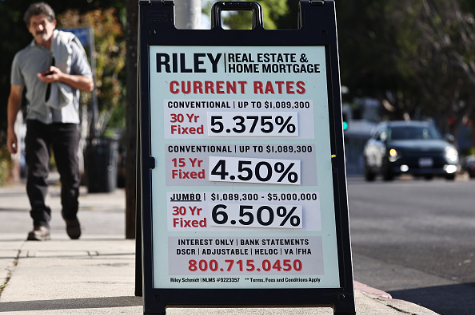
Simon Prior, Fixed Income Fund Manager, discusses the impact of the recent rate cut on both the fixed income and the broader market.
The Federal Reserve opened their rate cutting cycle with a sizeable 50bps at the last meeting, which before the planted articles in the FT and the WSJ, had been deemed a relatively remote possibility (after the plants far less so!). “So, what does that mean for bond yields?”, I hear you ask… “well where on the bond curve?”, I reply.
At the Jackson Hole speech, Powell made it very clear that this Central Bank Chairman was there for turning, lighting up the bond market so much so that 10 rate cuts were priced into the market before the end of 2025 (have we seen this before?), and lower yields across the curve. And lo and behold, what happens? With lower discount rates, risk assets do well, and economic activity gets a lift – after all, who was borrowing at the base rate? With so many rate cuts priced in, so many companies and individuals were able to take out loans or mortgages below the base rate. Here in the UK, the best 5-year mortgage terms have been consistently under 4% when the base rate was at 5% or above, corporate spreads have been similarly priced making a mockery of the current “restrictive” rates we currently have in place.
When Powell turned, and rates fell lower still (US 2y having fallen 140bps since end of April 30.04.24 – 16.09.24), economic activity was bolstered. The day of the 50bps rate cut of the Fed Funds rate, US housing starts were up nearly 10% month on month. The day after the rate cut initial jobless claims came in lower than expected and importantly continuing claims fell by over 10,000 people.
Yes, the unemployment rate has risen from the post pandemic lows, but at 4.2% it is historically strong – with much of the rise due to the large amount of new labour hitting the workforce. Parts of the market such as housing have been locked down almost as long as we were during Covid as a consequence of the higher rates – but if central banks unleash the housing sector too, then expect there to be further upside potential to broader economic activity.
So, with a relatively strong economy, cutting rates by 50bps is a brave move as the Federal Reserve look to normalise policy at pace – though note that Powell himself stated that he expected the neutral rate to be significantly above pre Covid times. The rate cut may stimulate the economy and with inflation still above target and goods deflation slowing, any increased activity may bring inflation back into the picture. The long end of the bond curve beware!
The risks to the above are the labour market deteriorating further, as well as any sign of fiscal prudence from either of the two presidential candidates (unlikely in our eyes) and both are something we are watching closely.
The next Federal Reserve meeting is a few days after the US election and one thing we do know is politics can often trump economic data.

